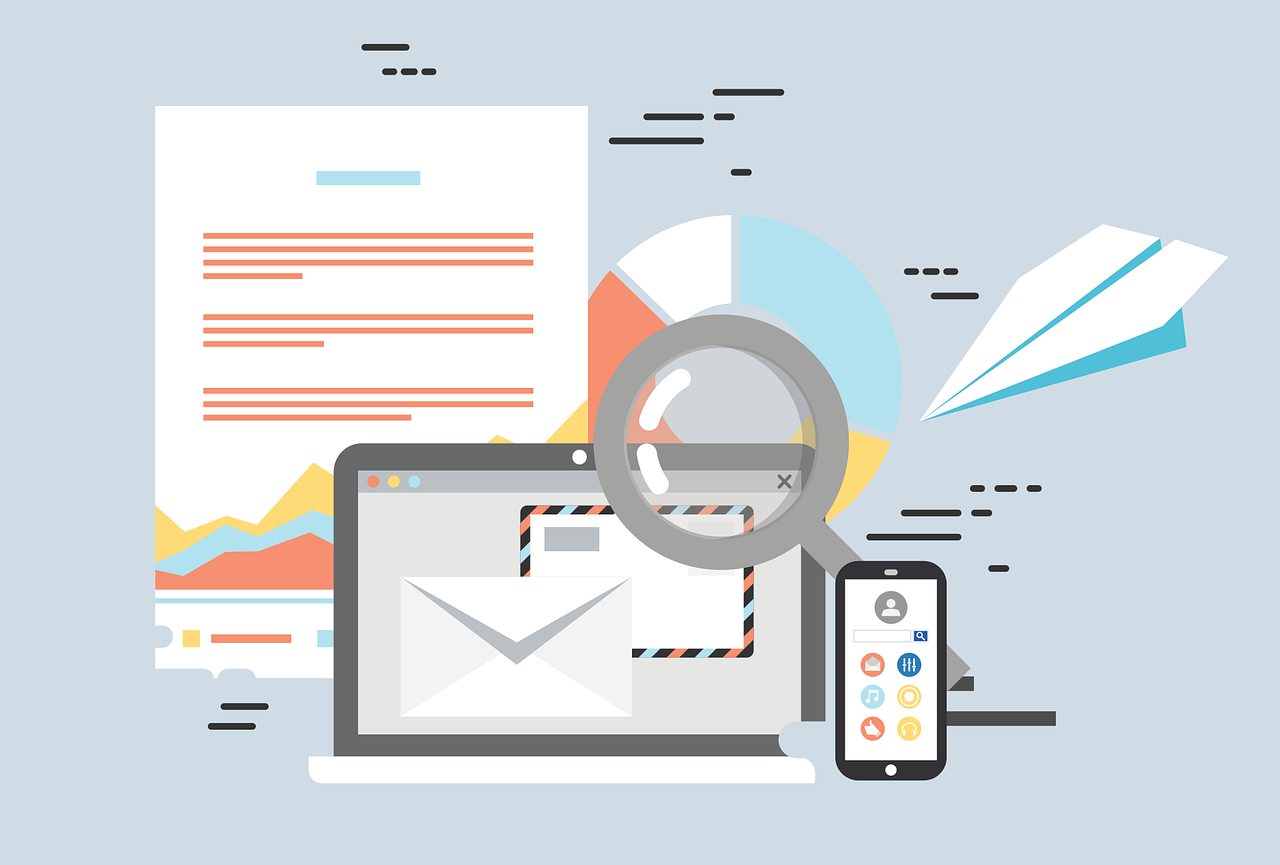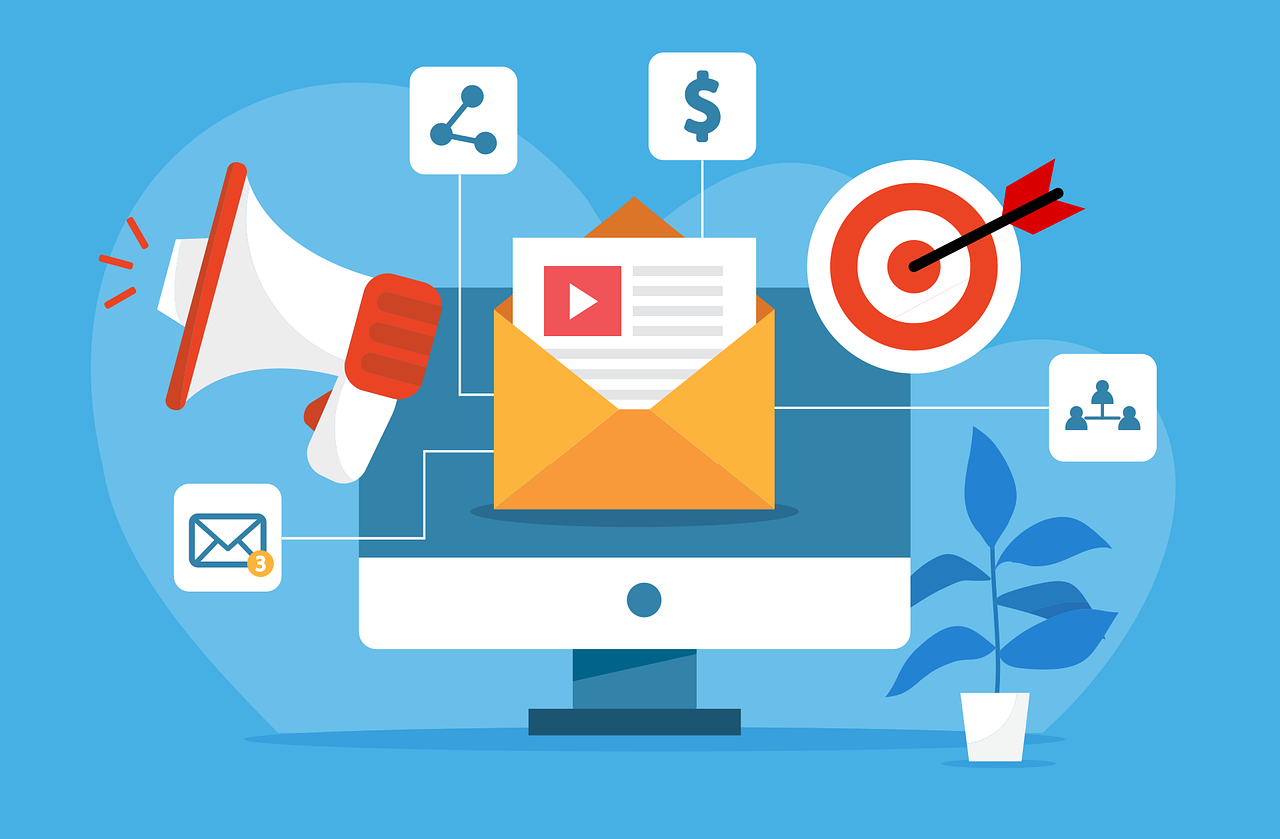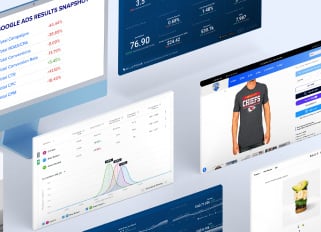
Optimizing Email List Management: Essential Tips for E-commerce Sellers
 In the ever-evolving digital landscape, e-commerce sellers are continually exploring innovative strategies to reach their customers. One such highly effective tool is building a robust email list and optimizing it for successful email marketing campaigns.
In the ever-evolving digital landscape, e-commerce sellers are continually exploring innovative strategies to reach their customers. One such highly effective tool is building a robust email list and optimizing it for successful email marketing campaigns.
This approach to e-commerce email marketing serves as a direct communication channel between sellers and potential customers. It fosters trust, enhances brand visibility, and ultimately drives conversions. In this post, we'll delve into essential tips and best practices for optimizing your email list management.
Kickstarting Your Journey to Building a Robust Email List
Because it allows online sellers to maintain direct contact with their customers and potential clients, the act of building an email list is a critical aspect of e-commerce email marketing.
The importance of building and optimizing an email list cannot be overstated. It provides sellers with a platform to share personalized content, announce new products, and deliver targeted promotional offers.
The bottom line is, if you want customers to end up on your online store's dedicated landing page, you need a solid email campaign. Starting the process of building an effectual email list from scratch may seem daunting for beginners, but it's an indispensable part of successful e-commerce email marketing.
Here's how to get started as you capture email addresses:
- Set Up An Email Marketing Account: Choose a reliable email marketing software or e-commerce email marketing service that offers features tailored to your needs, such as automation, analytics, and segmentation capabilities.
- Offer Value In Exchange For Email Addresses: People are more likely to share their email addresses if they receive something valuable in return. This could be in the form of exclusive discounts, access to personalized content, or early bird offers on new products.
- Create a High-Converting Landing Page: A well-optimized landing page can be a powerful tool for attracting consistent email sign-ups. Ensure that the messaging on your landing pages aligns with your offer and showcases the benefits that email subscribers will receive at a moment's glance. And don't forget call-to-action buttons!
- Leverage Social Media Channels: Promote your email sign-up form on your social media accounts, and use these platforms to encourage followers to join your email list for exclusive content and deals.
- Implement Pop-up Forms: Place pop-up forms strategically throughout your online store to incentivize website visitors to subscribe to your email list. Make sure these are non-intrusive and relevant to the user's experience; otherwise, they may have the opposite effect of what you're going for.
- Prioritize User Privacy: Assure your visitors that when your process for collecting email addresses will keep their personal information kept confidential. Also, make it clear that their email addresses will only be used for the purposes they've agreed to. This builds trust and may encourage more sign-ups.
Remember, the goal is to continually grow and nurture your email list. This results in a steady flow of potential customers, enhances the effectiveness of your email marketing campaigns, and drives successful e-commerce growth.
Segmenting Your Email List for Effective Marketing
Segmentation is a pivotal strategy in your e-commerce email marketing campaign. It allows your business to categorize its subscribers based on specific criteria, such as age, geographical location, purchase history, or even browsing behavior.
This targeted approach comes with a host of benefits:
Enhanced Personalization
Segmentation allows you to tailor your email marketing content to cater to specific subscriber groups, enhancing the personalization of your communication. This not only resonates better with your subscribers but also helps in fostering a deeper connection with your brand.
Improved Engagement Rates
With segmented emails, your subscribers are more likely to open and engage with your emails since the content (such as links or a recurring blog post) is relevant to their interests and needs. This leads to improved open and click-through rates, enhancing the effectiveness of your email marketing campaigns.
Increased Conversion Rates
Personalized and targeted emails have a higher likelihood of converting subscribers into customers. By segmenting your email list, you can send specific offers and promotions that are most relevant to each segment, thus increasing the chances of a purchase.
Decreased Unsubscribe Rates
Sending irrelevant emails can lead to your subscribers opting out of your email list. But when you send content that aligns with your subscribers' interests and shopping behavior instead, it reduces the chances of your followers unsubscribing.
.png?width=600&height=429&name=marketing-7621532_1280%20(1).png) Better Understanding of Customer Preferences
Better Understanding of Customer Preferences
Segmentation can provide valuable insights into your customers' preferences and behaviors. This can help shape your future marketing strategies to better meet your customers' needs and expectations.
How to Segment Your Email List
Segmenting your email list might seem like a daunting task, but with a structured approach, it can be straightforward and highly beneficial. Here's a step-by-step guide to help you:
Understand Your Customer Base
Begin by gaining a clear understanding of your customer base. This can be achieved by analyzing customer data, conducting surveys, and studying customer behavior on your website.
Define Your Segments
Based on your understanding of your online store's customer base, you can then define your segments. These could be demographic (age, location, etc.), behavioral (purchase history, browsing behavior, etc.), or psychographic (interests, lifestyle, etc.).
Use an Email Marketing Tool
There are several email marketing tools available that can help you segment your email list. For example, Mailchimp offers features such as segmentation, automation, and email analytics to help you build and manage your list. These tools can automatically segment your list based on the criteria you set, saving you time and effort.
Test and Refine
Finally, test the effectiveness of your segmentation by monitoring key metrics including open rates, click-through rates, and conversion rates. Based on these insights, you can refine your segments to make your e-commerce email marketing campaigns more effective.
Remember, the more specific you can get with your segmentation, the more personalized your emails can be, leading to better engagement and more conversions.
Analyzing and Optimizing Your Email Campaigns
Tracking and analyzing your email campaigns is integral to the success of your e-commerce email marketing.
This process, often referred to as email analytics, provides crucial insights that allow you to understand how well your campaigns are performing and where improvements can be made in your email management.
Deciphering User Behavior
Through analytics, you can understand how your subscribers interact with your emails. You can track metrics such as open rates, click-through rates, and conversion rates, which provide a clear picture of user behavior. Such data can be instrumental in making informed decisions about future campaigns.
Evaluating Campaign Effectiveness
Without tracking and analyzing, it's impossible to gauge the true effectiveness of your email campaigns. By assessing key performance indicators (KPIs), you can evaluate which campaigns are meeting your objectives and which are falling short.
Minimizing Unsubscribes
Analytics can also help you understand why subscribers might be opting out of your email list. By examining unsubscribe rates in conjunction with the content of your emails, you can identify any issues and work to minimize unsubscribes.
Maximizing ROI
Finally, analyzing your email campaigns can help maximize your return on investment (ROI). By understanding what works and what doesn't, you can adjust your strategies to optimize the outcomes, leading to more effective email marketing and a higher return on your investment.
The data gleaned from campaign analysis isn't just numbers – it's a collection of actionable insights that can drive your e-commerce email marketing success.
 Optimizing Email Marketing Based on Data Insights
Optimizing Email Marketing Based on Data Insights
Leveraging data insights can significantly improve the effectiveness of your email marketing campaigns. Here are some strategies to optimize your e-commerce email marketing based on data insights:
A/B Testing
One effective way to optimize your email marketing based on data insights is through A/B testing. This involves creating two versions of an email with one variable changed (such as the subject line, call-to-action, or content layout), and sending them to two equally sized segments of your audience.
You can then analyze which version performed better in terms of key metrics such as opens, clicks, and conversions.
Personalization
Data insights can also enable you to personalize your emails more effectively. By understanding your customers' behaviors and preferences, you can tailor your email content to better resonate with individual subscribers.
Send Time Optimization
Data insights can also reveal the best times to send emails to your subscribers. By analyzing when your audience is most likely to open and engage with your emails, you can schedule your sends accordingly to maximize overall engagement.
Content Optimization
Using data insights to understand what kind of content resonates with your audience can significantly enhance your email marketing performance.
By tracking metrics such as click-through rates and conversions, you can identify what type of content drives the most engagement and conversions.
Re-engagement Campaigns
Data insights can also help you identify subscribers who haven't engaged with your emails for a certain period. You can then launch re-engagement campaigns specifically targeting these subscribers, with special offers or content to win back their engagement.
The key is to continually test, analyze, and refine your strategies based on the data insights you gain. This will ensure that your e-commerce email marketing remains targeted, relevant, and effective.
Maintaining Email List Quality
Maintaining the quality of your email list requires regular cleaning. This process, also known as list hygiene, involves removing inactive or unresponsive subscribers from your list.
Inactive subscribers can skew your analytics, reduce your engagement rates, and even damage your sender reputation if they mark your emails as spam.
To clean your list, monitor your engagement metrics closely. Identify subscribers who haven't opened or clicked on any of your emails in a set period, say six months, and send them a re-engagement email. If they still don't respond, it's time to remove them from your list.
Remember, a smaller, engaged email list is far more valuable than a larger, disengaged one. Regular list cleaning ensures that your emails are reaching those who are genuinely interested and likely to convert, optimizing your e-commerce email marketing efforts.
Managing and Reducing Unsubscribe Rates
One of the key challenges of e-commerce email marketing is managing the dreaded unsubscribe rate. It's an inevitable part of building and managing an email list, but a high unsubscribe rate can severely impact your audience size and engagement.
Here are some strategies to mitigate and reduce your company's unsubscribe rates:
Clear Expectations
Set clear expectations from the get-go. When subscribers complete opt-in forms to sign up for your emails, make sure they know what kind of content they'll be receiving and how often. This transparency can prevent future discontentment.
 Relevant Content
Relevant Content
Make sure your content is relevant and valuable to your subscribers. Use your data insights to understand your target audience and tailor your content accordingly. Irrelevant content is a common reason for unsubscribing.
Email Frequency
Don't inundate your subscribers with emails. Too many emails can overwhelm and annoy your subscribers, leading them to opt out of future messages. Find the right balance based on your audience's preferences and engagement levels.
Easy Unsubscribe
Make it just as easy for both veteran and new subscribers to unsubscribe as it was for them to fill out an opt-in form. While this may seem counterintuitive, it shows respect for your subscribers’ inboxes and preferences, which can actually increase their likelihood of staying engaged.
Regular List Cleaning
Regularly clean your email list to remove inactive or disengaged subscribers. This can reduce your unsubscribe rate by preventing your emails from being marked as spam.
Remember, while it's important to continually strive to reduce your unsubscribe rate, it's equally important to respect your subscriber's inbox and their right to opt out. The focus should always be on building a quality, engaged email list for your e-commerce email marketing campaigns.
Conclusion: Taking Email Marketing to the Next Level
In conclusion, mastering e-commerce email marketing requires a blend of strategic planning, diligent implementation, and continuous optimization. It's about building a quality email list, leveraging data insights for personalization and performance enhancement, and regularly cleaning lists and managing unsubscribe rates.
By embracing these best practices, you can take your e-commerce email marketing to the next level. This drives customer engagement, boosts conversions, and enhances your bottom line.
For more tips and advice on maximizing your online store's performance, contact our team at Bluetuskr, an e-commerce marketing agency for a consultation!
Connect With Us
Recent Post

.png)








Tell us what you think!